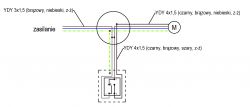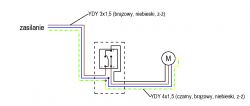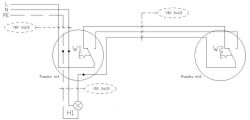Good day.
I would like to systematize the knowledge of connecting switches - what cables and where to use.
Please correct me if I am somewhere wrong:
1) single switch - 1 cable 3x1.5 mm2
2) double switch - 1 cable 4x1.5 mm2
3) single stair switch - 1 cable 4x1.5 mm2
4) two-way switch - 2 cables 4x1.5 mm2
5) single cross switch - 1 cable 4x1.5 mm2
6) double cross switch - 2 cables 4x1.5 mm2
7) normally open switch - 1 cable 3x1.5 mm2
8) three-position shutter switch - 1 cable 3x1.5 mm2
9) switch with dimmer - 1 cable 3x1.5 mm2
Regards, Anka.
I would like to systematize the knowledge of connecting switches - what cables and where to use.
Please correct me if I am somewhere wrong:
1) single switch - 1 cable 3x1.5 mm2
2) double switch - 1 cable 4x1.5 mm2
3) single stair switch - 1 cable 4x1.5 mm2
4) two-way switch - 2 cables 4x1.5 mm2
5) single cross switch - 1 cable 4x1.5 mm2
6) double cross switch - 2 cables 4x1.5 mm2
7) normally open switch - 1 cable 3x1.5 mm2
8) three-position shutter switch - 1 cable 3x1.5 mm2
9) switch with dimmer - 1 cable 3x1.5 mm2
Regards, Anka.







